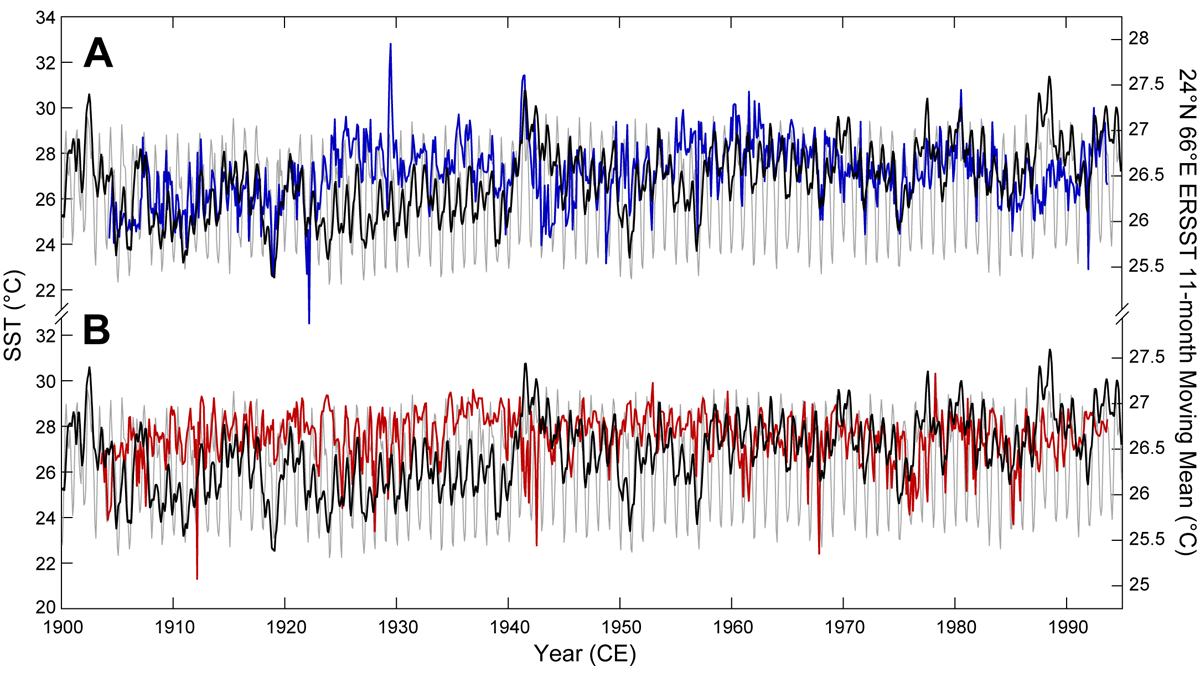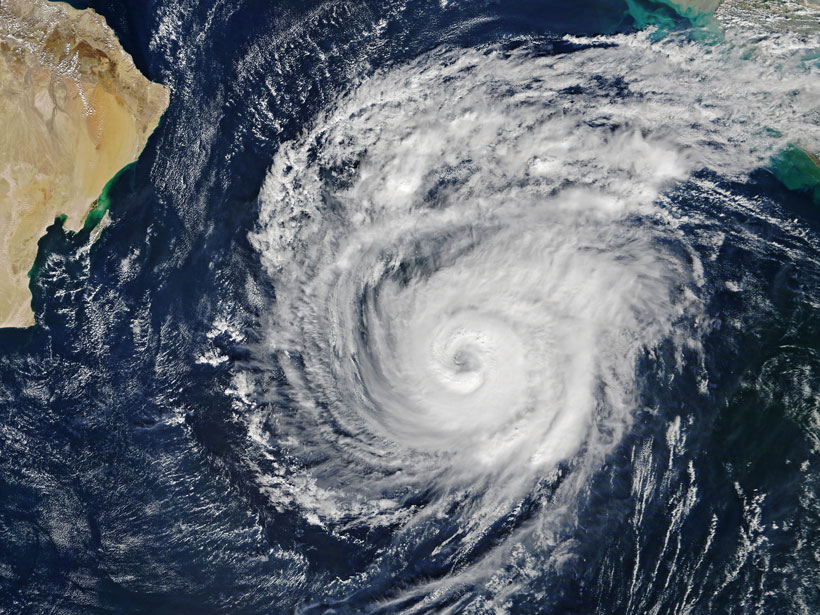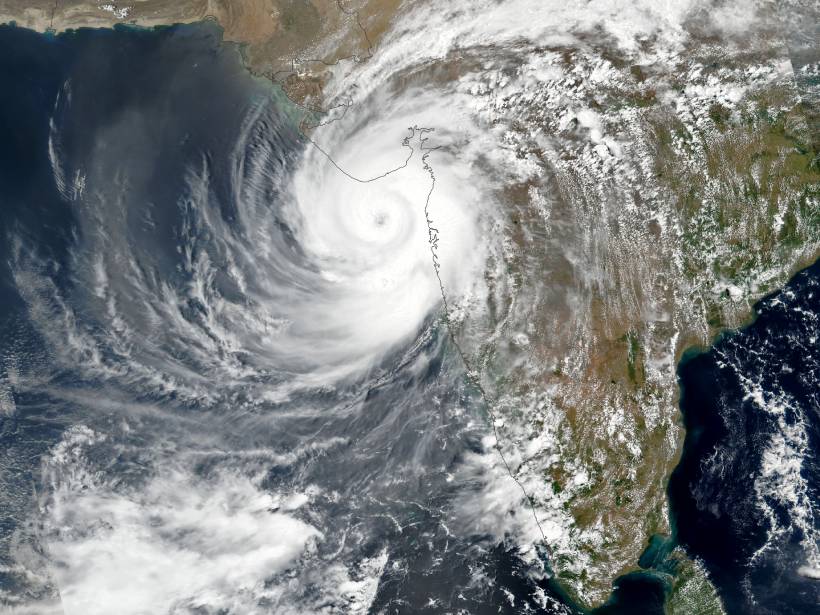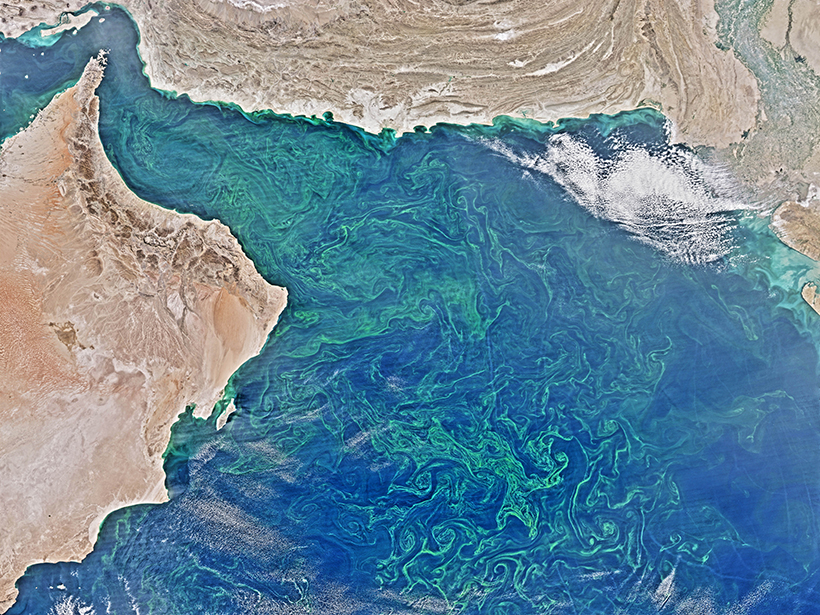Isotope study showing the partitioning of moisture into snow, ice, and groundwater allows an understanding of the relative contribution to river flow to show where Himalayan river water comes from.
Arabian Sea
Unlocking Ultra-High-Resolution Paleothermometry from Sediments
Mass spectrometric imaging techniques used to extract micron-scale organic paleothermometry signatures from Arabian Sea sediments show that they skillfully reflect observations.
Climate Change Is Making India’s West Coast More Vulnerable to Cyclones
A new study found significant increases in the intensity, frequency, and duration of cyclonic storms over the Arabian Sea. Is the west coast prepared?
Cyclone Tauktae Documents a Climate Trend in the Tropics
The western Indian Ocean has been warming at a rate faster than any other region in the tropical oceans, a pattern that is contributing to more frequent and intense storm activity.
Anaerobic Activity Is a Big Contributor in Marine “Dead Zones”
Climate models that do not account for anaerobic microbial activity may underestimate future expansion of oxygen-depleted waters.
An Unprecedented View of Biogeochemistry off India's West Coast
Yearlong study reveals seasonal changes in oxygen levels, nutrient availability, and plankton growth.
Correlating Monsoon Strength with Boron Isotopes
Scientists tell the story of the past monsoon by measuring boron isotopes in organisms in the Arabian Sea.
Elders Recall an Earlier Tsunami on Indian Ocean Shores
Legacies of the 2004 Indian Ocean tsunami include recent interviews with lucid eyewitnesses to an obscure disaster in 1945. The accounts attest to coastal hazards in Oman, Iran, Pakistan, and India.








